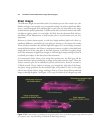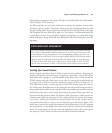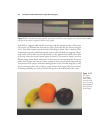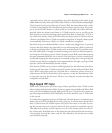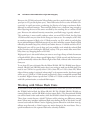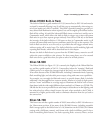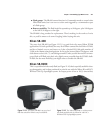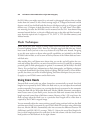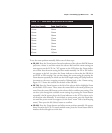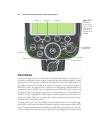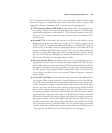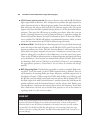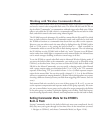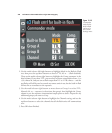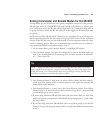
for ISO 100 as you might expect for a unit used to photograph subjects that are often
inches from the camera. It has a fixed coverage angle of 78 degrees horizontal and 60
degrees vertical, but the flash head tilts down to 60 degrees and up to 45 degrees (with
detents every 15 degrees in both directions). In this case, “up” and “down” has a differ-
ent meaning, because the SB-R200 can be mounted on the SX-1 Attachment Ring
mounted around the lens, so the pair of flash units are on the sides and tilted toward or
away from the optical axis. It supports i-TTL, D-TTL, TTL (for film cameras), and
Manual modes.
Flash Techniques
Entire books have been written on using Nikon electronic flash units, and the Nikon
Creative Lighting System (CLS). Even in a 500-plus page book like this one, I don’t
have room to show you how to use every feature of every flash unit. Instead, I’m going
to use this next section to discuss what specific capabilities are included in the Nikon
D7000’s built-in flash, as well as some of the key features of the Nikon dedicated exter-
nal flash units.
After reading this, you’ll know more about what you can do, and will explore the con-
trols and settings that will let you move beyond this overview. If you’d like an amazing
practical guide to flash photography in general, I recommend Joe McNally’s Hot Shoe
Diaries. You can find basic information on flash photography and lighting techniques
in my book David Busch’s Quick Snap Guide to Lighting. Like Joe’s book, it is non-Nikon-
specific, but shows you tricks of studio lighting, and other techniques that you can eas-
ily apply to your D7000 camera and its flash units.
Using Zoom Heads
External flash zoom heads can adjust themselves automatically to match lens focal
lengths in use reported by the D7000 to the flash unit, or you can adjust the zoom head
position manually if you want to use a setting that doesn’t correspond to the automatic
setting the flash will use. With older flash units, like the SB-600, automatic zoom adjust-
ment wastes some of your flash’s power, because the flash unit assumes that the focal
length reported comes from a full-frame camera. Because of the 1.5X crop factor, the
flash coverage when the flash is set to a particular focal length will be wider than is
required by the D7000’s cropped image.
You can manually adjust the zoom position yourself, using positions built into the flash
unit that more closely correspond to your D7000’s field of view when using a flash that
does not, like the SB-900, automatically take into account the difference between FX
(full-frame) and DX (APS-C) coverage. Table 12.1 shows the actual focal length of a
lens (or focal length position of a zoom lens) in the left column, with the closest zoom
head position on the flash unit in the right column.
David Busch’s Nikon D7000 Guide to Digital SLR Photography422



